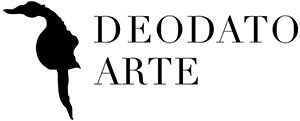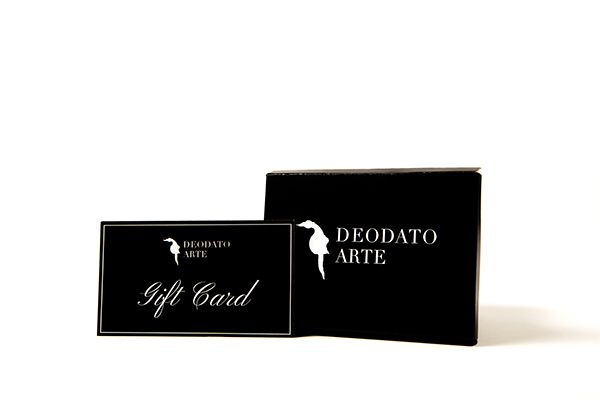- Home
- Artists
- Alex Katz
- Andy Warhol
- Angelo Accardi
- Arman
- Arnaud Nazare-Aga
- Banksy
- Bearbrick
- Bernard Aubertin
- Christo
- Damien Hirst
- Daniele Fortuna
- David Kracov
- David LaChapelle
- Dorit Levinstein
- Felipe Cardena
- Georges Braque
- Giosetta Fioroni
- Helmut Newton
- Henri Matisse
- iClim
- Invader
- James Rosenquist
- Jean-Michel Basquiat
- Jeff Koons
- Joan Miró
- José Molina
- Kaws
- Keith Haring
- Kenny Scharf
- Liu Bolin
- Lucio Fontana
- Marc Chagall
- Marco Glaviano
- Marco Lodola
- Mark Kostabi
- Maxime Siau
- Miaz Brothers
- Mimmo Rotella
- Mr. Brainwash
- Mr. Savethewall
- Obey
- Orticanoodles
- Pablo Picasso
- Richard Orlinski
- Robert Indiana
- Roy Lichtenstein
- Romero Britto
- Salvador Dalì
- Stik
- Takashi Murakami
- Tomoko Nagao
- Tvboy
- Yayoi Kusama
- ...other artists
- Athos Faccincani
- Carlo Massimo Franchi
- Davide Nido
- Franco Costalonga
- Francesco Musante
- Giampaolo Talani
- Giovanna Fra
- Giuliano Grittini
- Giuseppe Chiari
- Hiroyuki Takahashi
- Hitomi Maehashi
- Lido Bettarini
- Manolo Valdés
- Manuela Manes
- Matteo Guarnaccia
- Maurizio Galimberti
- Mimmo Paladino
- Salvatore Emblema
- Sam Francis
- Ugo Nespolo
- Xiaogang Zhang
- Gift Shop
- META VR
- BLOG
- ABOUT
- BUSINESS B2B
- Artists
- Alex Katz
- Andy Warhol
- Angelo Accardi
- Arman
- Arnaud Nazare-Aga
- Banksy
- Bearbrick
- Bernard Aubertin
- Christo
- Damien Hirst
- Daniele Fortuna
- David Kracov
- David LaChapelle
- Dorit Levinstein
- Felipe Cardena
- Georges Braque
- Giosetta Fioroni
- Helmut Newton
- Henri Matisse
- iClim
- Invader
- James Rosenquist
- Jean-Michel Basquiat
- Jeff Koons
- Joan Miró
- José Molina
- Kaws
- Keith Haring
- Kenny Scharf
- Liu Bolin
- Lucio Fontana
- Marc Chagall
- Marco Glaviano
- Marco Lodola
- Mark Kostabi
- Maxime Siau
- Miaz Brothers
- Mimmo Rotella
- Mr. Brainwash
- Mr. Savethewall
- Obey
- Orticanoodles
- Pablo Picasso
- Richard Orlinski
- Robert Indiana
- Roy Lichtenstein
- Romero Britto
- Salvador Dalì
- Stik
- Takashi Murakami
- Tomoko Nagao
- Tvboy
- Yayoi Kusama
- ...other artists
- Athos Faccincani
- Carlo Massimo Franchi
- Davide Nido
- Franco Costalonga
- Francesco Musante
- Giampaolo Talani
- Giovanna Fra
- Giuliano Grittini
- Giuseppe Chiari
- Hiroyuki Takahashi
- Hitomi Maehashi
- Lido Bettarini
- Manolo Valdés
- Manuela Manes
- Matteo Guarnaccia
- Maurizio Galimberti
- Mimmo Paladino
- Salvatore Emblema
- Sam Francis
- Ugo Nespolo
- Xiaogang Zhang
- Gift Shop
Register
Wishlist
Contact Us
- META VR
- BLOG
- ABOUT
- BUSINESS B2B


Thank you!

ORARI DI APERTURA
|MAPPA
- Home
- Artists
- Marco Lodola
- Drawings
- Il branco

Il branco
| Artist: Marco Lodola | Width: 29 cm |
| Support: Paper | Height: 21 cm |
VAT included
Products with VAT included show a price calculated with VAT tax, so the additional tax of 22% is already added to the price of these products.
VAT Margin
The products with VAT Margin apply the additional tax of 22% only on the margin, the difference between the price at which the product is purchased and the price at which the same product is resold.
THE ARTWORK
Marco Lodola - Il Branco
Marco Lodola's work “Il Branco”, created in 2024 on paper in a 21x29 cm format, deals intensely with the theme of group dynamics, using the minimal and symbolic style that characterizes the artist. The drawing depicts three stylized figures, all faceless, with significant gestures: one of them covers his face with his hands, while the other two seem to mock or point provocatively. The clean, essential lines highlight the absence of individualizing features, emphasizing the anonymity of the group and the possible dynamic of oppression.
The title “Il Branco” suggests a reflection on the collective mentality, in which the individual may find himself crushed by the weight of social pressures or bullied or marginalized. Lodola captures with a few strokes the tension that exists between the group and the individual, with the figure covering his face symbolizing vulnerability and suffering, while the other two figures represent the strength and insensitivity of the mass.
Through this seemingly simple scene, Lodola touches on profound themes such as conformity, cruelty and the loss of individual identity in the context of a “pack,” prompting the viewer to reflect on the complexity of human relationships and the devastating effects that group dynamics can have on the individual.
Marco Lodola and the Historical Calendar of the Carabinieri Force
The Historical Calendar of the Carabinieri Force, first published in 1928, is a true artistic icon that tells of the pride and tradition of the Force through unique illustrations. Conceived in Florence by General Gino Poggesi, then inspector of the III Zone, it became a fixture over time, supervised by the Museo Storico dell'Arma from 1934 until 1944.
Since 2016, the calendar has taken an innovative turn: its images are digitally produced, with Carabinieri immersed in masterpieces by great masters of painting, blending tradition and modernity in an unparalleled artistic tribute.
Marco Lodola, Il Branco: Prices and Value
Feel free to contact us to receive more information about Marco Lodola's work, Il Branco and the artist's other works for sale.
Make yourself a part of the wonders of art with the wide selection of works available on our site.
ADDITIONAL INFORMATION
Marco Lodola - Il Branco - 2024 - Unique Work
| SKU | 24-047-0643 |
| Technique | Mixed |
| Edition | Unique Work |
| Support | Paper |
| Width | 29 cm |
| Height | 21 cm |
| Year | 2024 |
| Notes | Hand-signed |
ARTIST: MARCO LODOLA
Biography of Marco Lodola Artist
Marco Lodola was born in Dorno, in the province of Pavia, on 4 April 1955. He dedicated himself to art right from the start, deciding to focus his studies on this subject. In fact, Marco Lodola first studied at the Academy of Fine Arts in Florence and then at the Academy of Fine Arts in Milan.
Marco Lodola began to take his first steps in the artistic scene in the 1960s when he created artworks featuring characters from the world of music. Of particular inspiration in these early days are pop artists such as Tom Wesselman and David Hockney.
Starting from the 1980s, Marco Lodola joined the movement called Nuovo Futurismo. From this moment on, the figure of Lodola the artist began to assert itself on the Italian and international scene. Over the following years, Marco Lodola will be engaged in a flourishing artistic production that will lead him to be one of the leading contemporary Italian artists. It is no coincidence that Lodola Marco took part in numerous exhibitions held in all parts of the world such as Italy, Beijing, Hong Kong, Singapore and New York.
During his long artistic career, Marco Lodola collaborates both with important musicians, such as Max Pezzali and Jovanotti, and with the world of cinema and television, creating stage sets.
Marco Lodola and the Nuovo Futurismo
Marco Lodola is considered, together with Dario Brevi, to be one of the founders of the artistic current known as Nuovo Futurismo.
Nuovo Futurismo stands as a continuation of Futurism, an artistic current that developed in the early 20th century.
Futurism, the first artistic avant-garde of the 20th century, which affected every branch of culture (from art to music), was born as a response to the trends of those years: the First World War, socio-political changes and technological developments greatly influenced the society and culture of the time. Against this backdrop, the artists felt obliged to take a clear position by expressing their views on their contemporary context.
In the eyes of the Futurist artists, the events that had affected not only Italy but also Europe had made all those ideological bases that had characterised the 19th century extremely obsolete. This gave rise to the need to progress, to move forward, to look to the future and no longer lock oneself in a past that was now dead. And this applies to art as well as to every sphere of life. Supporting these changes are also technological innovations and, in particular, the invention of the machine.
This, understood as an emblem of speed, fascinated artists who began to create works with speed as their subject. Speed, dynamism, progress and flowing time are therefore the salient features of Futurism.
The Nuovo Futurism therefore follows in this wake, taking the themes of Futurism and reworking them in a contemporary key. In particular, the artists focus their research on the concept of modernity and progress through the use of elements such as comic strips, advertising and mass media, as already done by the Pop artists, giving the works an entertaining and playful tone.
Works by Marco Lodola: his Iconic Subjects
Marco Lodola is an artist known worldwide not only for his unmistakable style, but also for his easily iconic subjects.
In his works, Marco Lodola treats subjects ranging from famous couples in love (as, for example, in the characters, Marco Lodola dancing or on a Vespa) to circus and music characters. The subjects chosen by Marco Lodola refer to the world of mass media, music advertising and their icons. It is no coincidence that Lodola Marco has often been compared to Andy Warhol: the father of Pop Art also used to take the subjects of his works from the mass culture fuelled by cinema and television.
Marco Lodola presents these subjects to the public without idealising them or elevating them to a higher status. Quite simply, the artist presents them in bright, vivid colours that emphasise the playful side of his works.
Among Marco Lodola's popular artworks are the famous Vespa Couples. The two characters are depicted embracing on a timeless Piaggio Vespa. The work is also a clear reference to the famous film Vacanze Romane in which the two protagonists ride around the streets of Rome on a Vespa.
The dancing couples are also famous. Marco Lodola depicts couples performing dance steps in a tight embrace. This subject is also considered one of Marco Lodola's most representative. Regardless of the subject Marco Lodola decides to treat, the style always remains the same and is immediately recognisable. The colours are bold and bright, the characters do not have a defined face as if to remove them from time, and light plays the leading role.
Other very famous subjects of Marco Lodola are cars, in particular the 500. Also a symbol of Italian culture in the world, they are found in many of Marco Lodola's works. Indeed, the artist often creates artworks celebrating Italy and its emblems (such as the 500 and Piaggio Vespas) that make Italy a world-famous country.
Even in the subjects of cars, Marco Lodola includes couples in love. A subject that can now be considered as Marco Lodola's most iconic.
In each of his works, Marco Lodola fully expresses his unmistakable Pop style, which has its roots in the 1960s, as demonstrated by the Pin Up and the Vespa.
Light Sculptures - Marco Lodola and the Use Of Neon
Marco Lodola is a world-famous artist. His light sculptures are particularly popular. These are sculptures of different sizes, made of perspex and neon. In the light sculptures Marco Lodola offers the characteristic features of all his works: bright colours and well-defined silhouettes reminiscent of the works of Romero Britto.
The artist also shows his typical subjects: Pin Up, Vespas, cars, show business and music personalities.
In creating his light sculptures, Marco Lodola is inspired by the lights of metropolises all over the world. These cities owe much of their beauty to the thousands of lights that illuminate them and the images that characterise them.
A characteristic element of Marco Lodola's sculptures is that the subjects are always depicted in motion. Cars, motorbikes, wasps and dancers are all depicted by Marco Lodola as they move.
This aspect is characteristic not only by Marco Lodola, but also by Nuovo Futurismo. As mentioned, this artistic movement takes up the themes of Futurism, including, precisely, speed. Hence Marco Lodola's intention to capture the agitated movement of his protagonists.
The sense of movement is very evident in sports-related subjects. Marco Lodola depicts sportsmen while they are intent on performing a particular gesture. One example is the tennis players that Marco Lodola depicts as they are about to hit the ball. In Marco Lodola's works, the traditional idea of a fixed, blocked image is thus dispensed with.
It should also be remembered that the artist is also inspired by Pop Art. Thus, the sense of speed captured by Marco Lodola is symbolic not only of the speed of today's times and their frenzy, but also of the speed with which the media are able to influence people.
Another peculiarity of these sculptures also lies in the places where they are exhibited. Marco Lodola likes to install his sculptures in public and urban places where everyone can admire his works at any time. Marco Lodola's decision to exhibit his sculptures in open spaces is also due to the effect the lighted works create at night.
According to Marco Lodola, their light that breaks the darkness makes people feel less lonely and quieter due to the comforting presence of the light emanating from the sculptures.
Marco Lodola's sculptures are celebrated worldwide not only for being unique works of art, but also for their versatility. Marco Lodola has designed them in different sizes so that they can be both placed and hanged. This characteristic makes Marco Lodola's works of art suitable as furnishing objects. In doing so, Marco Lodola has succeeded in creating an art that can concretely enter people's everyday lives.
Find Out Prices And Value Of Works For Sale By Marco Lodola
Deodato Arte offers online prices and value for the Artworks for sale by Marco Lodola.
Discover the value of Marco Lodola's artworks and the irresistible works of the artist available online and in our venues.
Works By Marco Lodola For Sale On Deodato Arte
Deodato Arte has been dealing in modern and contemporary art for years, including the artworks of Marco Lodola.
In our Online Art Gallery, the most complete Art Gallery for the Sale of Artworks in Italy, you can find Lodola's Artworks that can be viewed in our Art Galleries in Milan with the support of professionals of the sector.
Discover for Marco Lodola: Prices and Value of Contemporary Artworks.
SHIPMENT DETAILS
The artwork will be packed with rigid supports that will protect it from potential damage during transportation. It does not require a wooden box and delivery to EU countries takes 2-5 business days.
For deliveries outside the EU there may be a clearance delay at customs. Contact [email protected] to receive an estimate of possible customs delays.
The shipping cost is calculated before payment. The cost of packaging is included in the shipping cost.
For more information, please visit our Shipping Methods, Returns and Refunds page.
HD IMAGE
By registering you can download a template of the certificate of authenticity and/or HD image. Register and make the page reload.
REGISTER OR LOGINHOW TO BUY
We are happy that you decided to buy an artwork. We'll explain how to do it, but always remember that you can also buy via email ([email protected]), by phone (+39 02.80886294) or by physically coming to one of our galleries.
PRICE
If the price is visible in the product fiche you can click "ADD TO CART" and proceed autonomously choosing later how to pay and how you like shipping (or pick-up it in one of our store).
If the price is not visible, you must press the "SHOW PRICE" button, so you will receive an email with the price and a button, "DON'T LOOSE IT, BUY NOW": if the price is right for you click on this button and you will be sent back to the site to complete the purchase.
TAX
if you LIVE IN EU
If you live in Europe (CEE) the price we show you already includes taxes. The works are taxed either with VAT exposed (22%) or VAT with the margin, if you are a private person you do not change anything, if you are a company: in In the first case, you will recover the VAT, in the second, no. When you put the works in the cart you will be separated from the vat exposed.
If you DON'T LIVE IN EU and you want an EXTRA EU shipping
Many works (not all) have an exposed VAT of 22% included in the price, this vat will be spun off! Obviously you will pay the VAT to your destination country, if due. For example if you live in Switzerland you save 22% but you will have to pay 8.1% to your customs, if you live in Hong Kong you will save 22% and you will not have to pay anything to your customs (lucky you).
SHIPPING
Shipments are insured, check the product fiche for more information, or write to [email protected]. For works in stock the delivery time for Italy is three working days, before placing your order please contact us via email ([email protected]) or by phone (+39 02.80886294) to check availability.
PAYMENT
If you complete the purchase on the site you can use a credit card, or you can make a bank transfer. Payment in cash is accepted up to 5,000 euros physically in one of our stores. Payments in BitCoin or cryptocurrencies are NOT accepted.
- Mr. Savethewall My heart - Poster£12.34 VAT included
VAT included
Products with VAT included show a price calculated with VAT tax, so the additional tax of 22% is already added to the price of these products.
VAT Margin
The products with VAT Margin apply the additional tax of 22% only on the margin, the difference between the price at which the product is purchased and the price at which the same product is resold.










 Register
Register Wishlist
Wishlist Contact Us
Contact Us










